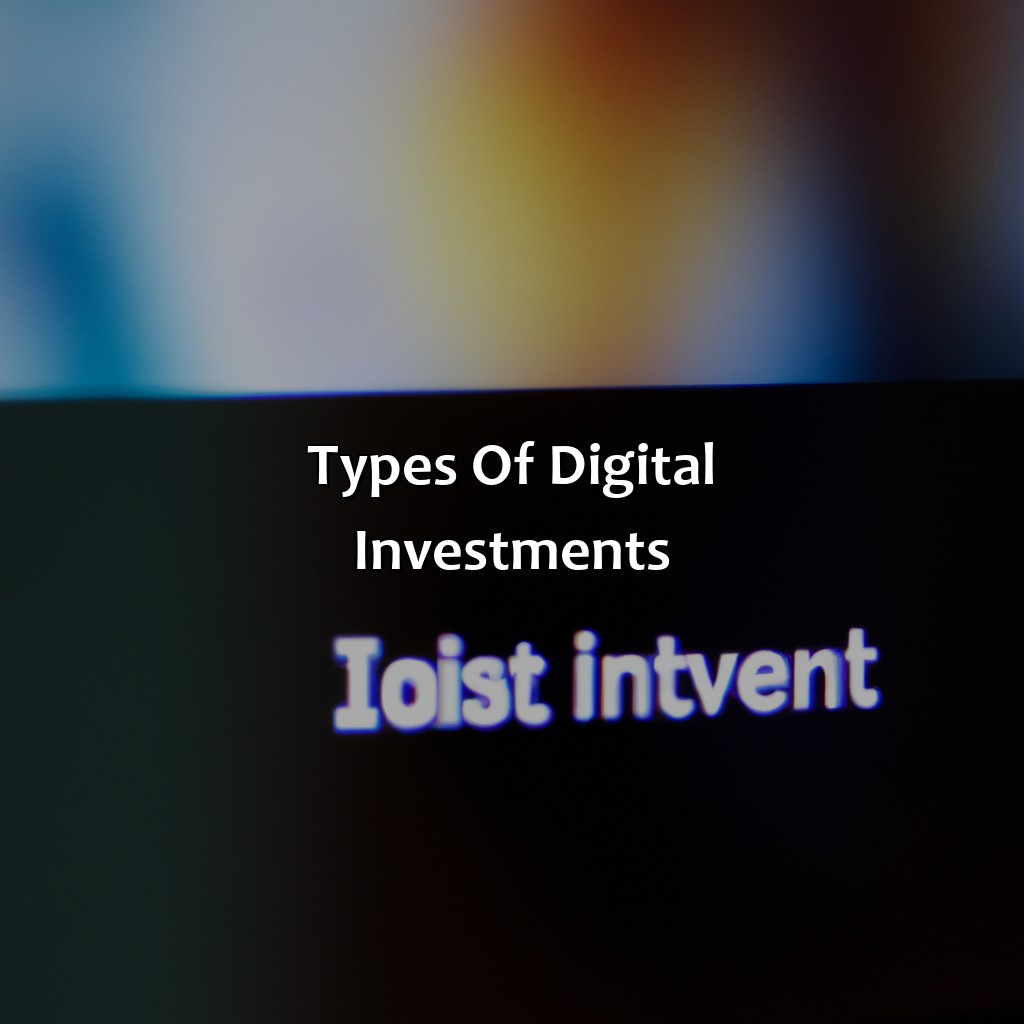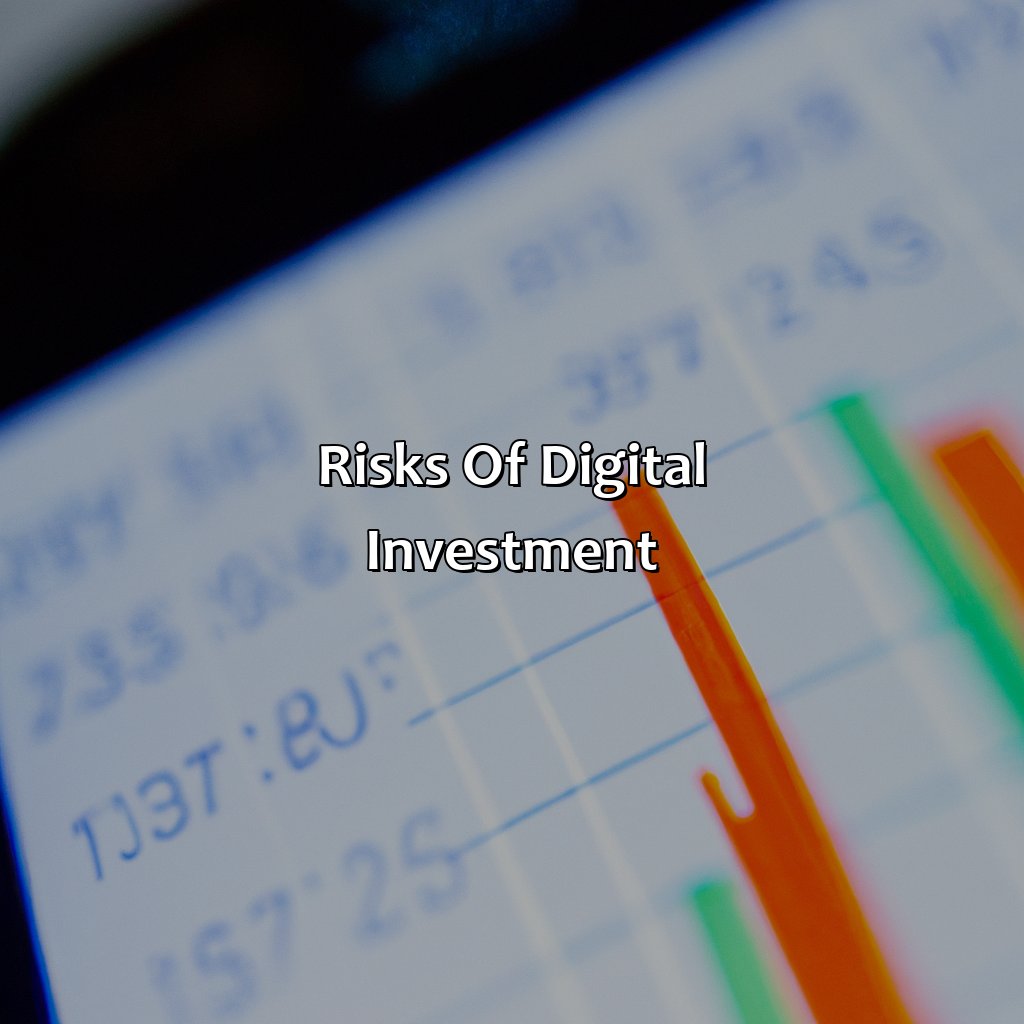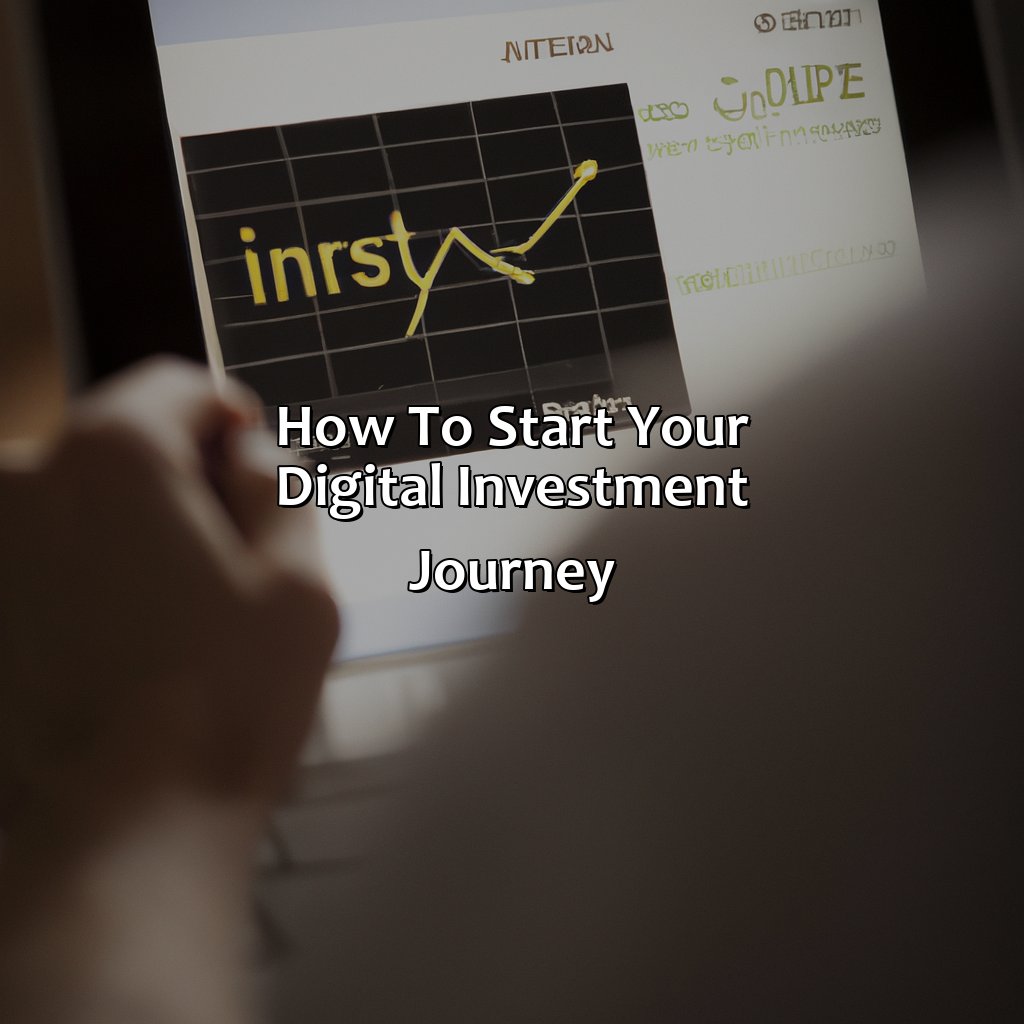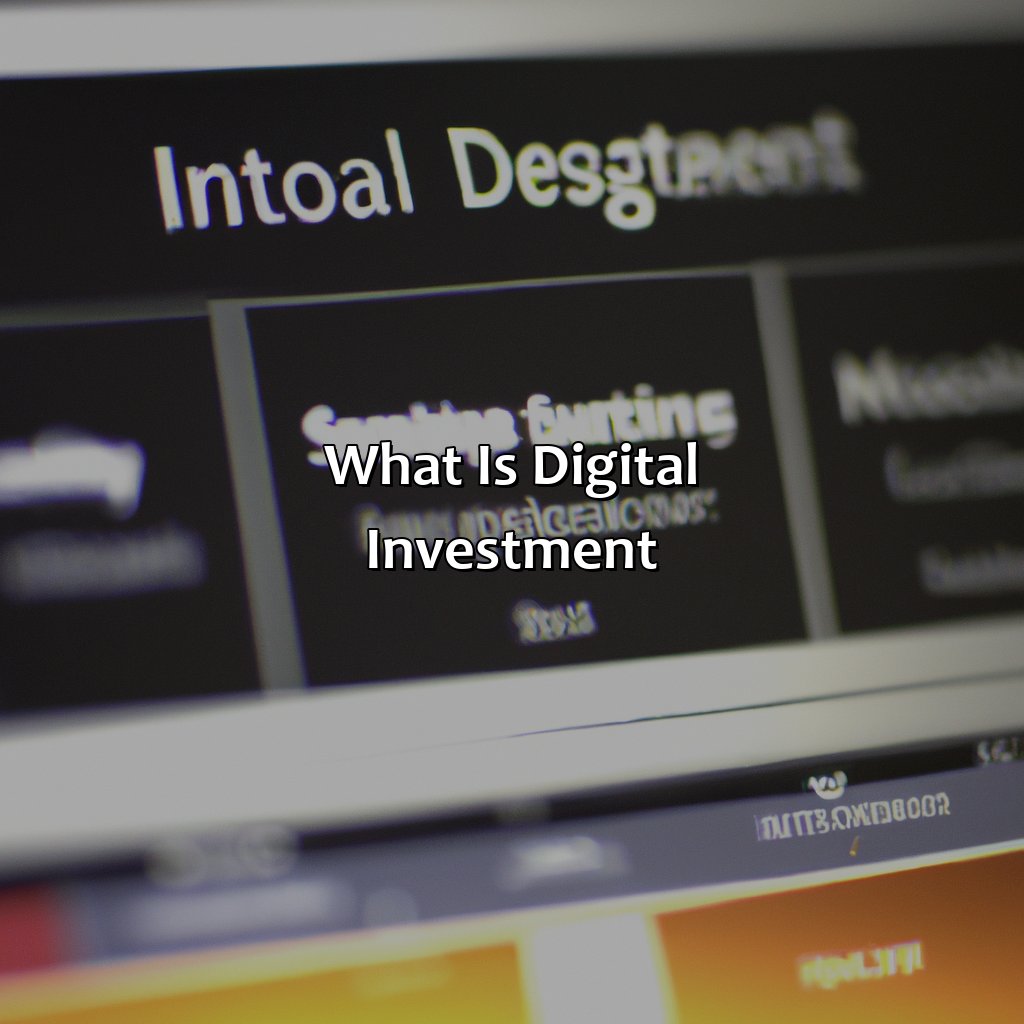What Is Digital Investment?
Key Takeaway:
- Digital investment refers to the use of technology to invest in financial assets and instruments to maximize profits and returns. It offers a new way of investing that is convenient, accessible, and affordable for retail investors.
- There are different types of digital investments that investors can consider, such as cryptocurrency investment, crowdfunding investment, robo-advisory investment, and peer-to-peer lending. Each offers unique advantages and risks that investors should carefully evaluate.
- Digital investment has several advantages, including accessibility, affordability, diversification, and flexibility. It allows investors to access global financial markets and invest in various assets, from stocks and bonds to commodities and currencies.
Are you looking to make a smart investment? Have you been considering digital investments? Learn more about what digital investment is, how it works and how it can benefit you.
Definition of Digital Investment
In the digital age, investing has taken on a new form known as digital investment – an activity made possible by the integration of technology and finance. Digital investment involves using online platforms and mobile applications to buy, sell or transfer investment products such as stocks, bonds, and mutual funds. This process is automated, involves little to no human intervention, and takes place in real-time.
With digital investment, investors can access a wide range of investment products from anywhere and at any time. This is possible because many investment platforms use algorithms and machine learning to analyze market trends and provide tailored investment options. Additionally, digital investment platforms charge lower fees compared to traditional brokerage firms, making it accessible to a wider range of investors.
Unlike traditional investment, digital investment offers a seamless and effortless experience for investors. By leveraging technology, investors can monitor the performance of their investments, make informed decisions, and manage their portfolios in real-time. With the rise of digital investment, traditional investment firms have also embraced the trend, integrating digital technology into their services.
The concept of digital investment dates back to the early 2000s when online trading platforms started gaining popularity. However, it was only in recent years that the growth of digital investment has accelerated, thanks to advances in technology and changing consumer preferences.

Image credits: retiregenz.com by Joel Duncun
Types of Digital Investments
Understand digital investments? Four main categories can help. Cryptocurrency, Crowdfunding, Robo-advisory and Peer-to-Peer Lending. Each type has advantages and risks. Know these nuances before investing. Expertise and a distinct approach are necessary.

Image credits: retiregenz.com by Harry Arnold
Cryptocurrency Investment
Investing in the digital world can take many forms, and one example is the revolutionary phenomenon of ‘Crypto Investment’. It involves investing money into cryptocurrencies like Bitcoin, Ethereum, and Ripple with the hope of a profitable return on investment.
Cryptocurrencies are decentralized digital assets that work independently from central banks or governments. Unlike traditional investments, where an individual may invest in physical assets like gold, shares, or property, crypto investments do not have any physical existence but rather exist in an encrypted form on a blockchain. The demand for cryptocurrency has increased rapidly due to its decentralization, anonymity, security, and ease of use.
Furthermore, owing to the high volatility nature of cryptocurrencies and lack of investor protection, it is crucial to stay updated with cryptocurrency news and market trends before making any investment decision. Investors may engage in short-term trading or long-term investing strategies depending on their risk appetite and financial goals.
It is noteworthy that major corporations such as Tesla have also invested in cryptocurrencies recently. According to Coinmarketcap data as per May 2021 statistics (source-name), the total market capitalization of all cryptocurrencies was over 2 trillion dollars.
With crowdfunding, you can invest in other people’s dreams and become a part-owner of their future therapy sessions.
Crowdfunding Investment
Digital investment through collective financing, also known as ‘Crowdsourcing Investment,’ is a modern way for individuals or organizations to raise capital from multiple investors. By using an online platform, the investment pool allows small contributions from numerous parties, facilitating startups without the need for extensive personal savings or bank loans.
Through expert analysis or software algorithms, prospective investments are evaluated and potential returns are estimated to minimize risk. Moreover, crowdfunding investor-pools offer equity and rewards-based models that ensure both risks and financial benefits are equally distributed among investors.
To participate, potential investors scrutinize crowd-managed investments proposals with different themes like technology, creative arts, or charitable organizations; before making decisions based on their long-term objectives and investment risks.
One of the notable cases in this type of digital investment was when OculusVR used crowdfunding to build their Virtual Reality headset before being acquired by Facebook for $2 billion USD. The VR headsets deliver photorealistic graphics allowing users to immerse themselves via games or apps in entirely artificial environments.
Who needs a financial advisor when you’ve got a robot that never judges your spending habits?
Robo-advisory Investment
Digital investment through automated advisors, or robo-advisors, is a form of investment that utilizes algorithms to produce financial advice. Using a semantic-based program for the collection and analysis of data, robo-advisors offer customized investment portfolios fitted for individual goals and risk tolerance. This can include low-cost ETFs and stocks, allowing investors to gain their desired exposure while preserving their principal capital.
By using sophisticated algorithms to maintain and adjust an investor’s portfolio based on market changes, robo-advising streamlines the management process and reduces costs compared to traditional forms of wealth management. Investors can monitor their performance online or via an app in real-time, offering unmatched convenience.
Investors leveraging robo-advisory investments largely forego the face-to-face guidance from human experts but gain unparalleled efficiency during transactions and ease of access to valuable investing tools such as tax-loss harvesting. According to Vanguard’s research, a customized robo-advised portfolio could reduce expenses by 82% compared with human advisory services.
Want to lend money to complete strangers with just a few clicks? Welcome to peer-to-peer lending, where you can either make a fortune or regret your life choices.
Peer-to-Peer Lending
Investing in platforms that facilitate P2P borrowing and lending is a great way to diversify portfolio. This form of lending involves direct interaction between investors and borrowers, eliminating the need for intermediaries like banks. The transactions are conducted online, safely and transparently, with lower fees than traditional financing methods.
Investors can choose between different interest rates offered by borrowers based on their risk profile. In turn, borrowers benefit from more favorable loan terms than those offered by banks. Despite some level of inherent risk due to potential default by borrowers, P2P lending has proven to be a reliable source of returns for savvy investors.
One unique perk of P2P lending is the potential to invest in specific sectors or types of loans that match personal interests or preferences. For instance, some platforms specialize in loans for small business owners or renewable energy projects, allowing investors to support specific causes while also earning returns.
Pro Tip: Before investing, research each platform’s loan offerings and borrower requirements carefully to make informed investment decisions. Who needs a crystal ball when you’ve got digital investments? Say goodbye to the unpredictability of traditional investments and hello to the convenience and control of the digital age.
Advantages of Digital Investment
Gaining the most from your investment requires comprehension of digital investment benefits. These include accessibility, affordability, diversification, and flexibility. This article will explain ease of use, low fees, wide range of assets, and the ability to make changes quickly.

Image credits: retiregenz.com by Yuval Washington
Accessibility
The convenience of accessing various investment options through digital platforms is a key advantage of digital investment. It enables investors to easily access and monitor their portfolio, make trades, and get real-time updates from anywhere in the world. Furthermore, digital investment platforms are available 24/7, eliminating the need for physical visits to traditional financial institutions. This increases the accessibility of investments to a wider range of individuals who may not have had access previously.
Digital investment also provides investors with greater flexibility in terms of investment options. Investors can choose from a range of products such as stocks, bonds, mutual funds or exchange-traded funds (ETFs). Additionally, investors can diversify their portfolio by investing in multiple products across different industries and geographical regions. This increases the chances for better returns while minimizing risks.
One unique aspect of digital investing is automated investing services or robo-advisors that use algorithms to provide customized portfolio management based on individual goals and risk tolerance levels. These services often require lower minimum investments compared to traditional financial advisors.
According to Forbes in 2020, “the number of new retail accounts opened last year doubled that seen during the previous decade with $4 trillion in assets moving into these accounts“. Thus indicating an increase in digital investment adoption among individuals.
Digital investment may be affordable, but remember, you still have to pay the price of poor decision-making.
Affordability
One of the significant benefits of investing using digital platforms is its cost-effectiveness that enables more people to access investments. It is an affordable option, especially for people who are starting or have limited funds to spare. This affordability makes it accessible to all and democratizes investment opportunities.
Utilizing digital investment platforms saves on expenses such as broker fees, management costs, and other account maintenance fees. These charges can add up swiftly when dealing with traditional investment options. By comparison, many online investment companies offer commission-free trades and lower fees than their brick-and-mortar counterparts.
Furthermore, investing digitally allows users to purchase fractional shares instead of having to buy an entire share at once. This feature makes it incredibly easy for anyone to start with small amounts. Dividend reinvestment plans also help grow investments over time by automatically re-investing dividends back into the portfolio.
Digital investment options present an opportunity for investors worldwide, regardless of location or background. Don’t miss out on this opportunity to experience affordable investments with potential returns.
Digital investment: because putting all your eggs in one virtual basket is way less risky than doing it in real life.
Diversification
In the world of digital investment, one key benefit is variance, which enables investors to diversify and spread their investment across different assets. By spreading investments across assets with different characteristic features like stocks, bonds, and cryptocurrencies, investors can minimize potential risks in case of market volatility while maximizing their returns. This strategy allows for better stability in an investor’s portfolio as opposed to the risk of fluctuations in a single asset.
An additional point worth noting is that digital investment presents lower fees compared to traditional investing methods such as hiring human financial advisers. The use of robo-advisors (automated advisory services) makes this possible. Investors need only set up instructions for trading algorithms which are run by advanced computer systems capable of monitoring market trends.
By using digital investment strategies like variance for diversification purposes one can be more robust against uncertainties caused by sudden changes in the financial markets. For example, instead of investing all funds into stocks or cryptocurrency alone one could invest 30% percent in stocks, 40% percent in cryptocurrency products like Bitcoin and Ethereum and 30% into other alternative markets. In doing so any potential losses would be less detrimental than allocating all funds into a single avenue.
When it comes to investing success stories it’s hard not to mention Warren Buffet’s experience with diversified investments paid off utilizing his strategy around “imitating a basket”. He famously invested around $10K each into thirty different companies offering stock dividends only half made reasonable returns: However overall they balanced each other out showcasing the advantages of obtaining diversified investments through digital investment avenues opening up various possibilities for stronger portfolios over time providing both stability and profitability opportunities over time.
Digital investment offers the flexibility to manage your money from anywhere, whether that’s your couch or the beach, as long as there’s Wi-Fi and a charged device… and a decent hat to protect your screen from glare.
Flexibility
The adaptability of digital investment provides investors with multiple venues for allocating funds. Diversification through asset allocation and customization of portfolios is effortless.
In addition, digital investments offer the flexibility to operate 24 hours a day, seven days a week, increasing liquidity and accessibility to markets worldwide. These transactions can be executed using various devices such as laptops or smartphones, eliminating the need for face-to-face interactions, improving efficiency.
Furthermore, the ability to receive real-time updates on market fluctuations and access to research reports is noteworthy. Investors can react promptly to changes in financial trends via value-added services like robo-advisory platforms.
The evolution of technology has revolutionized traditional finance models; with the introduction of digital investments, financial activities have become more accessible and efficient by offering easy-to-use interfaces. Newbie individuals who aspire to invest can easily acquire knowledge relevant to investing while building their portfolios online or seeking advisory services from professionals.
During the COVID-19 pandemic, when countries implemented lockdowns and social distancing measures, investors who had invested digitally were not affected financially as they could execute transactions remotely without any disruption. This showcases that adopting digital investments offers flexibility against current uncertainties can prove beneficial in times of crises.
Digital investment is like jumping off a cliff – exciting and potentially rewarding, but there’s always the chance you’ll hit rock bottom.
Risks of Digital Investment
To gain insight into the dangers of digital investing in finance, research the subsections of Volatility, Market Risks and Liquidity Risks. Each of these types offer diverse difficulties and must be taken into account by digital investors.

Image credits: retiregenz.com by James Jones
Volatility
The instability of digital investments is a significant concern, as it involves the unpredictability of returns caused by price fluctuations in the market. This volatility can negatively impact an investor’s portfolio performance and cause losses that are difficult to recuperate.
Digital assets are not regulated, which means they are highly influenced by investors’ emotional reactions to market news and events. Consequently, any external factor such as changes in economic policies or natural calamities could drastically affect the asset’s value. The high volatility of digital investments poses a challenge for investors who seek stability in their portfolios.
Traders should also bear in mind that volatility is not universal across all digital investment options. Different investment options have varying degrees of volatility depending on factors such as the current state of the industry, competition levels etc. Therefore, traders must analyze each investment’s unique risks before investing their hard-earned money.
With high risk comes high potential rewards; however, investors must take calculated risks when making any investment decisions. They must develop effective risk management strategies suited to their investment goals and implement them properly to mitigate loss from adverse market moves. Failing this would lead to missed opportunities and potential losses due to insufficient planning when making trading decisions.
Digital investment may be risky, but it’s still safer than investing in a company that sells fidget spinners.
Market Risks
The potential downsides of investing in digital assets must not be overlooked. Digital investments carry significant market risks, such as volatility, liquidity concerns, and regulatory uncertainty. The fluctuating nature of the digital market can lead to sudden drops in portfolio value, resulting in substantial losses for investors.
Furthermore, digital investments have a reputation for being unpredictable and often challenging to track, making it difficult to make informed decisions regarding asset allocation. Additionally, cyber attacks and other security threats pose significant issues when it comes to securing investor funds.
Although certain benefits come with digital investment, it is essential to acknowledge the hazards associated with investing in an uncharted industry before diving headfirst into the market.
Investors must exercise due diligence and conduct thorough research before deciding to invest in any digital asset or cryptocurrency. FOMO (Fear Of Missing Out) should not influence investment decisions without adequate knowledge of the risks involved. Investors must assess their risk tolerance levels and seek professional advice before committing money to this high-risk market.
Digital investment is like a high-stakes game of Jenga, with the liquidity risks being the bottom blocks – one wrong move and your entire investment can come crashing down.
Liquidity Risks
Investing in digital assets can lead to liquidity risks, which refer to the difficulty or impossibility of selling an asset quickly without affecting its price. Digital investment involves buying and holding digital currencies or tokens, which are traded on exchanges with varying levels of liquidity. In trading, there is always a risk that the market will not have enough buyers or sellers at any given time, leading to sharp price fluctuations and reducing the value of the asset.
This risk is particularly high for less established digital assets that trade on relatively illiquid markets or those with low trading volumes. Investors could suffer losses when they try to sell these assets due to difficulties in finding buyers as a result of lack of interest in the specific asset or other factors affecting its liquidity.
It is crucial for investors to understand the level of liquidity associated with their investments before making purchase decisions. They should also pay attention to how rapidly they expect market conditions and investor sentiment around a particular asset will change. It may be beneficial for investors to diversify across multiple token types and hold onto them for longer than expected if faced with unfavorable market conditions.
Pro Tip: Involve an experienced professional who can provide advice on different strategies at different times while keeping track of fluctuating markets.
Ready to take the plunge into digital investment? Buckle up, it’s going to be a bumpy, yet exciting, ride.
How to Start Your Digital Investment Journey
Jumpstart your digital investment voyage! Get a firm grasp of the steps needed to sail through this complex terrain. Research and education basics should be your first port of call. Then, pinpoint your investment objectives. Next, pick an appropriate platform. Finally, develop and monitor your portfolio.

Image credits: retiregenz.com by David Jones
Research and Education
To gain knowledge about Digital Investment, it is imperative to undergo Self-Training and Knowledge Development. One should start by Learning Online through various resources available like Blogs, YouTube Tutorials, eBooks, Webinars etc. Acquiring financial literacy is crucial for beginners in the field of Digital Investments.
In order to stay updated with the current market trends and investment patterns, regular education is required. Maximizing your learning curve and being aware of the opportunities around you can lead to better investment decisions.
Learning from experienced investors who have witnessed ups & downs of this volatile market can prove to be quite beneficial for newbies. Numerous books exist that document historical trends within digital investments.
For instance, Cryptocurrency has gained a lot of attention for its exponential growth in the past few years. People who invested early turned into millionaires almost overnight but that resulted in many others losing their fortunes too. Thus reflecting how important it is to have a prior understanding of this complex and ever-changing landscape of Digital Investments.
Why settle for just a house when you can upgrade to a mansion? Identify your investment goals before you start your digital journey.
Identify Your Investment Goals
As a crucial step towards digital investment success, determining your objectives for investment is paramount. By defining your financial goals, you tailor investments to meet specific targets, maximize cash flow and minimize portfolio risk. Assessing risks versus rewards helps you pick the right investments for your unique objectives and risk tolerance levels. Additionally, identifying your investor category and choosing appropriate types of assets are key steps toward successful digital investment.
Investment goals should be specific, measurable, achievable and timely (SMART). Common investor categories include growth seekers, income seekers or both and asset types such as equities, fixed income securities and cryptocurrencies offer unique advantages within each category. With smart investment planning, investors can attain their short-term retirement or long-term wealth creation objectives while building high-performance portfolios.
It is said that legendary investor Warren Buffet’s successful investment strategy involves setting long-term goals with a strong margin of safety in investing capital. He suggests that investors must avoid flitting in/out of the market looking for quick gains to stay invested during the volatile market periods to build durable long-term value investments.
Choosing the right investment platform is like dating- don’t settle for the first one you find, do your research and make sure it’s a perfect match.
Choose the Right Platform
In the quest to start your digital investment journey, it’s vital to select the appropriate platform that meets your needs.
- Consider the platform’s user-friendliness and ensure that it provides a streamlined process for creating and managing an account.
- The pricing models should be within your financial capacity, offering fair rates while providing value for money.
- Look out for available investment options on the given platform. It’s essential to select a platform that offers diverse investment opportunities like cryptocurrencies, equity and bonds.
- Also, consider platforms with reputable security measures in place to safeguard your investments adequately.
Choosing the right platform is an essential aspect of digital investing. Additionally, engaging professional financial advisors could enhance investment decisions by providing informed insights on investment opportunities.
A recent study by Forbes indicates that in 2021, 74% of high-net-worth investors turned to robo advisory services or hybrid advice offerings.
Building a portfolio is like building a sandcastle – it takes time and effort, but it only takes one wave to wash it away.
Build and Monitor Your Portfolio
Invest with conviction. Developing and observing your investment portfolio helps you progress in your digital investment journey. Strategize your investment process to build a diverse range of assets, monitoring for risk, balance and performance updates regularly.
For a healthy financial future, consider the varied factors underlying each digital asset before finalizing and adding it to your portfolio. Selectively investing in sustainable companies and global portfolios can optimize returns over time.
To maximize digital investments’ potential, predetermine industry benchmarks on the periodical changes required for specific company market shares, themes, technology breakthroughs or regulatory developments.
Did you know that DigiFund is America’s first mutual fund investing exclusively in cryptocurrencies like Bitcoin?
Some Facts About Digital Investment:
- ✅ Digital investment, also known as online investment, refers to the use of technology to buy and sell financial assets. (Source: Investopedia)
- ✅ Digital investment platforms have lower fees compared to traditional brokerage firms. (Source: The Balance)
- ✅ Robo-advisors use algorithms and artificial intelligence to manage digital investment portfolios for investors. (Source: Forbes)
- ✅ Digital investment is accessible to anyone with an internet connection and a bank account. (Source: Business Insider)
- ✅ Some popular digital investment platforms include Robinhood, Wealthfront, and Betterment. (Source: NerdWallet)
FAQs about What Is Digital Investment?
What is digital investment?
Digital investment refers to the process of investing in digital assets such as cryptocurrencies, stocks, mutual funds, bonds, and other financial instruments that can be bought and sold electronically. Digital investment is different from traditional investment because it is conducted entirely online, which means investors can buy and sell assets from anywhere in the world with just a few clicks.
What are the benefits of digital investment?
Digital investment offers many benefits, including lower costs and fees, faster transactions, and greater access to investment opportunities. Digital investment platforms also allow investors to monitor and manage their investments more easily, with real-time data and analytics. Additionally, digital investment can provide greater transparency and security as investors can track their investments and transactions on a public ledger.
How does digital investment differ from traditional investment?
Digital investment differs from traditional investment in several ways. Traditional investment involves physical or tangible assets such as real estate, gold, and art, while digital investment involves intangible assets that exist in digital form. Traditional investment requires more paperwork, intermediaries, and higher fees compared to digital investment, which is conducted entirely online with lower fees and faster transactions.
What are some examples of digital investment?
Examples of digital investment include investing in cryptocurrencies such as Bitcoin, Ethereum, or Ripple, trading stocks and bonds online through brokerage firms, and investing in mutual funds and exchange-traded funds (ETFs) using digital platforms. Additionally, new types of digital investment opportunities such as initial coin offerings (ICOs) and decentralized finance (DeFi) projects are emerging.
Is digital investment safe?
Like any investment, digital investment carries some risks, such as market volatility, regulatory uncertainty, and cybersecurity threats. However, digital investment can be made safer by using reputable platforms, diversifying investments, and conducting thorough research before investing. Investors must also exercise caution when dealing with scams, phishing attempts, and other fraudulent activities that are prevalent in online investment.
Why should I consider digital investment?
Digital investment provides an opportunity to access a wider range of investment opportunities with lower fees and faster transactions. It also offers greater flexibility in managing investments and provides real-time data and analytics for better decision-making. As digital assets grow in popularity and become more mainstream, digital investment may provide compelling returns and opportunities for growth.
